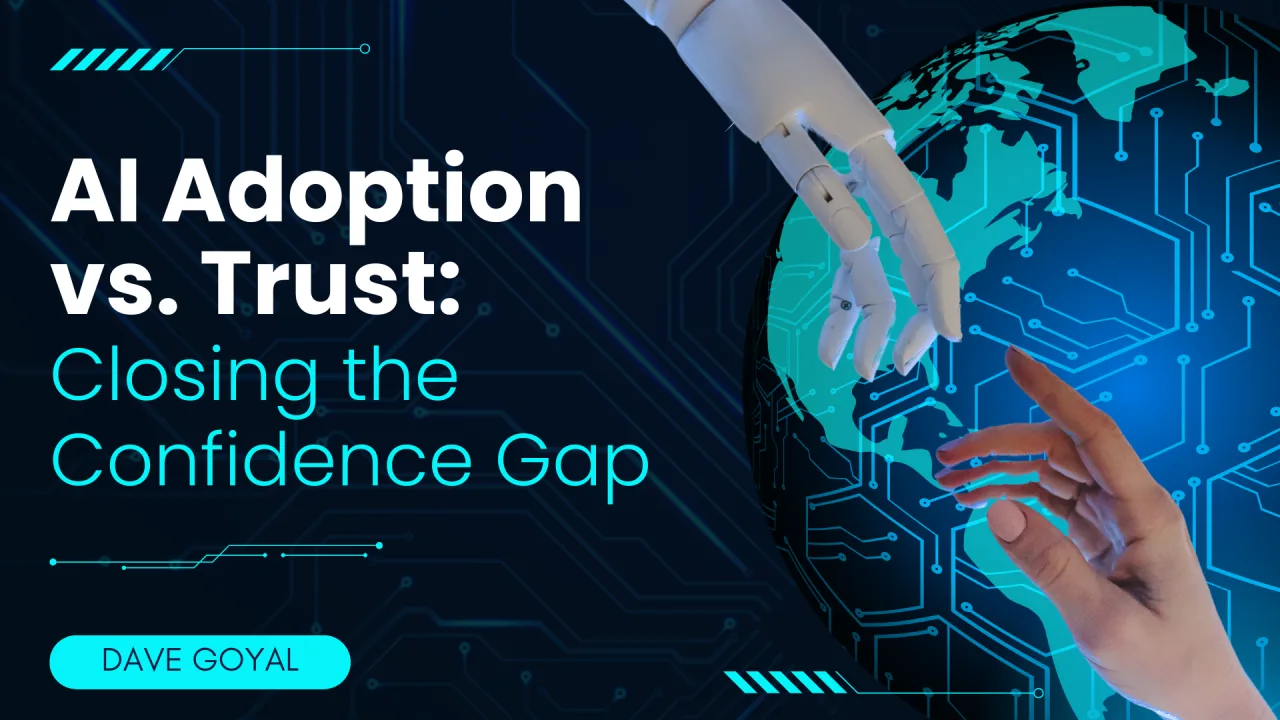Artificial intelligence is no longer a distant vision; it is rapidly becoming a mainstream driver of operational change. From content generation to intelligent automation, AI systems are being adopted at a striking pace. According to a Gartner-backed study cited by Lifewire, 76% of midsize organizations are now investing in generative AI initiatives. Yet despite this surge in enterprise enthusiasm, a striking trust gap remains: only around 40% of consumers say they trust outputs generated by AI.
This gap between adoption and trust is more than a perceptual problem. It represents a potential roadblock to the long-term viability of AI-powered services and products. In an environment increasingly shaped by digital-first experiences, businesses must prioritize not just innovation but also transparent, responsible, and explainable AI practices.
The Drivers Behind Rapid AI Adoption
Organizations are investing in AI for good reason. Generative models and other AI systems promise significant gains in efficiency, creativity, and personalization. Key areas of adoption include:
- Customer service through AI chatbots and virtual agents
- Marketing content creation using generative text and image models
- Data analysis and forecasting for decision-making
- Internal productivity tools powered by intelligent assistants
For midsize companies, the appeal is especially strong. These firms often lack the scale to build proprietary tools or staff large teams. Generative AI platforms level the playing field, offering capabilities once exclusive to large enterprises.
Moreover, AI is increasingly tied to competitiveness. According to the World Economic Forum’s 2024 Future of Jobs Report, over 75% of organizations globally are planning to integrate AI into their operations by 2027, with generative AI seeing the fastest momentum.
Why Consumer Trust Still Lags Behind
Despite this adoption wave, consumers remain cautious. Surveys by organizations such as Pew Research and Edelman reveal a pattern: while people are willing to use AI-powered tools, they express skepticism toward the information and decisions AI produces. Common concerns include:
- Lack of transparency in how AI arrives at decisions
- Bias in outputs, especially in hiring, credit scoring, and law enforcement
- Data privacy risks from systems trained on vast public and personal datasets
- Deepfakes and misinformation, which have eroded confidence in digital media
Even in relatively benign domains like e-commerce recommendations or AI-generated summaries, users often prefer human verification. In sectors like healthcare or legal services, trust levels are significantly lower.
The result is a paradox: while consumers may interact with AI daily, they do so warily. And that caution can quickly become resistance if brands fail to provide accountability.
From Adoption to Assurance: What Businesses Must Do
To bridge this confidence gap, organizations need to move beyond deployment and toward governance, explainability, and ethical alignment. The most forward-looking enterprises are beginning to take deliberate steps in four key areas:
1. Explainable AI (XAI)
One of the leading causes of mistrust is the “black box” nature of many AI models, especially large language models and neural networks. Explainable AI refers to designing systems where users can understand the rationale behind outputs.
This is especially critical in regulated sectors such as finance or healthcare. For example, an AI system recommending insurance premiums must be able to show its decision trail. Firms like IBM and Microsoft now offer toolkits to help enterprises make AI outputs more interpretable for both internal stakeholders and end-users.
2. Governance Frameworks
Companies must institute policies for responsible AI use, especially when models are trained on sensitive or proprietary data. These frameworks should address:
- Data provenance and consent
- Fairness audits to detect bias
- Security safeguards against misuse
- Human oversight mechanisms for critical decisions
Global initiatives like the OECD AI Principles and regulatory movements such as the EU AI Act reinforce the importance of governance. Businesses that align early will be better positioned to manage both compliance and customer trust.
3. Transparency in Communication
A critical but often overlooked strategy is communicating clearly with customers when AI is used. Many users are unaware when they are interacting with an AI agent. Others may not understand how much influence AI has over a recommendation or outcome.
Transparency can include:
- Labelling AI-generated content
- Disclosing limitations or confidence scores
- Providing access to a human fallback option
Studies show that users are more accepting of AI decisions when they feel informed and empowered to question or override them.
4. Ethical Alignment and Public Engagement
Trust is not built solely on technical reliability. It is also shaped by values. Businesses that use AI responsibly, prioritizing inclusion, privacy, and user dignity, tend to earn higher consumer loyalty.
Examples include:
- Adobe’s Content Authenticity Initiative, which aims to watermark and verify AI-generated content
- Mozilla’s efforts to promote open-source, privacy-preserving AI
- SAP’s AI Ethics Policy, which includes internal training and stakeholder engagement
Executive Takeaway: Trust Is the Real Infrastructure
Technology adoption is a race, but trust is the terrain it runs on. Many organizations today are deploying AI faster than their customers can digest. The result is a fragile advantage, one that can collapse under scrutiny or backlash.
The future belongs to firms that recognize trust as a foundational asset. Building it will require:
- Cross-functional collaboration between technical, legal, marketing, and compliance teams
- User-centered design, ensuring AI tools empower rather than alienate
- Continuous auditing and feedback loops, keeping models accountable over time
As generative AI becomes embedded in everything from HR decisions to customer engagement, the pressure to “move fast” must be balanced with the need to “build responsibly.”
Enterprises that do both will not just scale AI effectively; they will shape how the world learns to trust it.
Click here to read this article on Dave’s Demystify Data and AI LinkedIn newsletter.

